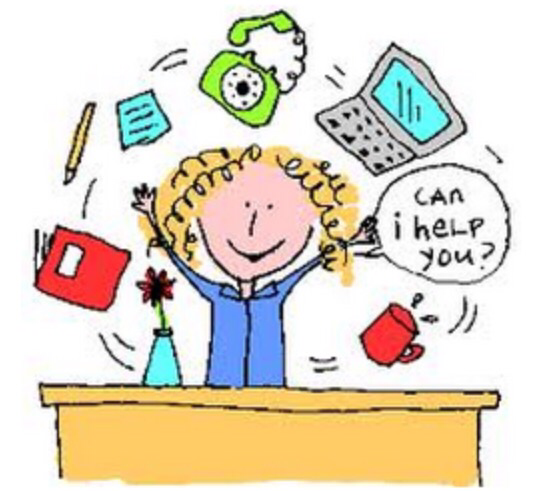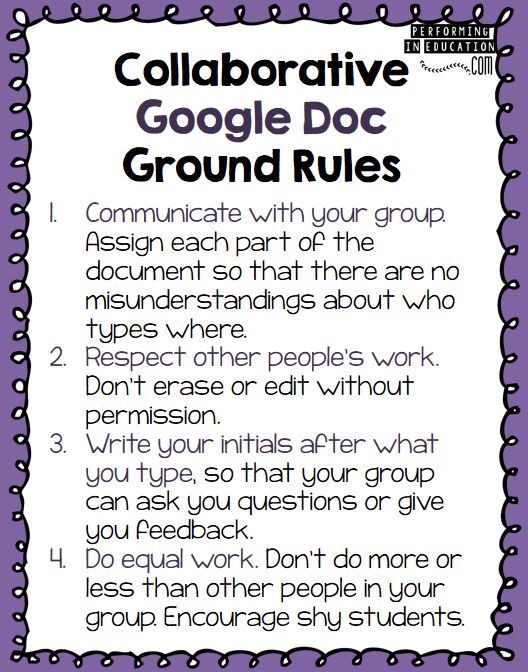Touchstone
In my Momma’s Kitchen

Part one:
Nolen, J., & Bootman, C. (1999). In my momma’s kitchen. New York: Lothrop, Lee & Shepard.
Scholastic recommends this Fiction for grades pre-k thru Third grade.
Part two:
This Fiction is touchstone book appropriate for pre-kindergarten through third graders. This story is about a girl and her memories of her mother’s kitchen, these memories are written in short stories. Her best memories of her aunt Emma’s wedding, or her sisters Nadine’s letter of acceptance to the university. All of her warm, fun and delicious childhood memories are centered out of this loved kitchen in her home. The author uses well-developed sentences structure and an advanced vocabulary that fits great in these stories telling stories which occur in the Momma’s Kitchen. Each short story is telling a memory that builds on each other, putting the book together. Each story comes with beautiful and colorful illustrations. This story incorporates family life by connecting them to the kitchen as a central gathering place in her home.
Part three:
The story is non-linear, the point of view if from a girl, name unknown. There is not a lot of information of the narrator, besides she’s a child and they are African-american There is a cross-cultural view from a African American family, who are a low-income home. There is no timeline that is attached to the stories either. The stories are told in a unknown timeline directing to the childhood memories of her Momma’s kitchen.
Part four:
Lesson objective: The reading literacy standard covered is RL.3.5, which in the objective form is; Refer to parts of stories, dramas, and poems when writing or speaking about a text, using terms such as chapter, scene, and stanza; describe how each successive part builds on earlier sections.
Standards-based lesson activity: A writing lesson plan for third graders would be for students to write a journal on a special place in their home. This would give students the insight on other cultural homes and families. The journal question would be; How does a special place in your house encourage friends and family to talk and enjoy each other’s company? Another activity would be to reencounter a time that they went to visit a family member or a friend and journal their observation, what room were they in? What did they eat? Lastly, a lesson suggestion is to have the student write about fun, warm and playful memories and where did they occur?
Discussion questions based on the book:
What do the short stories together tell you about the family’s kitchen?
What makes the kitchen so special?
Some outside resources for other ideas:
https://www.scholastic.com/teachers/books/in-my-momma-rsquo-s-kitchen-by-jerdine-nolen
https://www.teachingbooks.net/tb.cgi?tid=45737
Caldecott
Madeline
Part one:
Bemelmans, L. (2016). Madeline.
Scholastic recommends this Fiction for grades pre-k thru second grade.
Part two:
Story takes occurrence in an orphanage in Paris during the early 1900’s. Madame Clavel is the mistress of the house where there’s twelve girls. Madeline is the smallest of them all and the bravest. She’s not scared of anything, she is not even scared of the doctor. Madeline gets sick and needs to stays away from the orphanage. She gets a visit from the eleven girls and Madame Clavel. Madeline shows them her scar.
Part three:
The story is linear, told in third-person narrative.. There narrator doesn’t give a lot of information, it gives the reader the setting, Paris. The book is an old and classic, which won’t relate to the new generation. Theres not a lot of information of boarding schools or orphanages. The book is directed to girls, since its a home for twelve girls. The wording is simple for the evolving readers.
Part four:
Lesson objective: The reading literacy standard covered is RL.2.3, which in the objective form is; Describe how characters in a story respond to major events and challenges.
Standards-based lesson activity: A writing lesson plan for third graders would be for students to write a journal on How do you show your confidence to others? including body, health & nutrition. How did Madeline respond to the major events in her life in a hospital bed? What kept Madeline’s spirit up?
Discussion questions based on the book:
Madeline is a brave, little girl who lives in Paris. Would you like to travel to France?
Have you had a surgery or spend the night at the hospital? How were you courageous and/or brave?
Some outside resources for other ideas:
Madeline by Ludwig Bemelmans | Scholastic. (n.d.). Retrieved April 07, 2017, from https://www.scholastic.com/teachers/books/madeline-by-ludwig-bemelmans/
Batchelder

Part one:
Liniers, . (2015). Written and drawn by Henrietta. New York: TOON Book.
Scholastic recommends this book for grades first thru fifth grade.
Part two:
When introduced with a box of color pencils, Henrietta was ecstatic. She was ready to draw and write her own story. She wrote and drew even scared herself while doing so. She was writing a book of comics. The book is definitely set up as a graphic novel, but it is being developed by Henrietta and the reader. It shows the reader the capability of making your own comic book or graphic book. Its awesome and with bright colorful pages. Henrietta gets lost in this project she’s creating. She even gets scared on some parts, demonstrating the dedication and commitment she has to her story.
Part three:
The story is linear and developed by a first person point of view. Henrietta is a young developing artist, who just received her first set of color pencils. She discovers that she wants to make a story of a three headed monster and his adventures. This is a story that originally was made in Argentina by an artist who does the news paper comics. This is a well-developed story, but the authors background is needed to understand the storyline. For example, the three headed dragon represent his three daughters. Each of his daughters personality is played out in the monster. I really enjoyed Henrietta’s process of creating this book; she brainstorms, draws, and writes. She talks to her cat Fellini, its a raw state of her writing and drawing. Its also created in a way that no other book is, as in a fairy tale type of way. This book is relatable to the reader.
Part four:
Lesson objective: The reading literacy standard covered is RL.2.3, which in the objective form is; Describe how characters in a story respond to major events and challenges.
Standards-based lesson activity: Using some of the words that Henrietta used in the context, introduce a chart seperated in four columns with interesting words, I know what it means already, I looked it up, and here’s another word that means almost the same thing. Using the following words to identify in to the three categories; mysterious, terrified, impossible, chaos, wardrobe, gigantic, labyrinth and hatology. In addition have the students draw 15 different hats that they can think of and introduce those to the classroom.
Discussion questions based on the book:
What does Henrietta mean when she said “Hats off” on page 9?
What does Henrietta mean when she said “Life is a labyrinth” on page 32?
Some outside resources for other ideas:
https://www.scholastic.com/teachers/books/written-and-drawn-by-henrietta-by-liniers/
https://www.worldcat.org/title/written-and-drawn-by-henrietta/oclc/945743701&referer=brief_results
https://www.teachingbooks.net/tb.cgi?tid=47159
Historical Fiction
Realistic Fiction/Challenged
Common Core State Standards

Part one:
Long, E. (2013). The Wing Wing brothers math spectacular!. New York: Holiday House.
Scholastic grade recommendations unknown
Part two:
This non-fiction is common core state standard book is appropriate for pre-kindergarten through kindergarten. This story is about a set of brothers and their competitiveness. They compete to see who can spin the most plates in the air, without dropping. Wendell and Wilmer are always trying to outdo themselves. This book goes thru four different acts, Comparing Amounts, addition and subtraction, and finally more addition and subtraction. The illustrations on the book are great, beautiful and colorful.
Part three:
The story line is non-linear, and from a third person point of view. The book is narrated to the reader as if they were participating in the math activities the Wing Wing brothers are doing. The book is very linear, in which theres only one way of teaching, not taking other kids learning abilities in to consideration.
Part four:
Lesson objective: The book meets the standard counting and cardinality: identify whether the number of objects in one group is greater than, less than, or equal to the number of objects another group. (K.CC.6) and compare two numbers between 1 and 10 presented as written numerals (K.CC.7). It also meets the standards for kindergarten mathematics int operations and algebraic thinking: understand addition as putting together and adding to, and understand subtraction as taking apart and taking from (K.OA.1-5).
Standards-based lesson activity: The activity that would work with this book would be to re-do the book using another theme. The student teaching the same book with other students can ensure the new learning material.
Discussion questions based on the book:
How many plates were used in the book?
How many Wing Wing brothers were used in Act 1, Act 2 and Act 3? What act had the most birds?
Some outside resources for other ideas:
https://www.teachingbooks.net/tb.cgi?tid=33439&s=d
Graphic Novels
BabyMouse, Queen Of The World

Part one:
Holm, J. L., & Holm, M. (2006). Babymouse, queen of the world. London: HarperCollins Children’s.
Scholastic recommends this Graphic novel for grades first grade thru fifth grade.
Part two:
This Graphic novel is about a mouse, Babymouse, he is in middle school. Babymouse dreams of being Queen of the world. She dreams being the queen of the world with a tiara, no homework and ice cream for lunch. In her school the popular “queen” is Felicia Furrypaws. Babymouse wishes she would be like Felicia Furrypaws at lease her assistant, Felicia has her own group of friends and doesn’t notice Babymouse. Until, one day Felicia Furrypaws forgot to complete a book report and asked Babymouse for hers. Felicia Furrypaws offers Babymouse an invitation to her upcoming slumber party in exchange of Babymouse’s book report. Babymouse forgot she had plans to watch a movie with her best friend Wilson. Babymouse realizes that she is the queen of her world and everything is perfect with her best friend Wilson. She has no needs to be friends with a mean cat like Felicia Furrypaws.
Baby mouse comes to a very important realization when she goes to Felicia Furrypaws slumber party. This is what she wanted, to be the queen of the world or at lease friends with the Queen. She quickly realizes that with Felicia Furrypaws she doesn’t have it all, “its like a cupcake without icing, or a dress with no hearts.” She rushes over to her best friend Wilson and has the best slumber party a queen can have.
Part three:
The story is linear, and from a first person point of view, Babymouse. The challenge that most graphic novels are read from left to right, up and down but in Babymouse, Queen Of The World there are parts that are read unsequenced making it hard for the reader to follow. The book is also directed for a girl due to the want to fit in and the importance of being yourself. It’s not targeted for boys.
Part four:
Lesson objective: The reading literacy standard covered is RL.3.6, which in the objective form is; Distinguish their own point of view from that of the narrator or those of the characters.
Standards-based lesson activity: A writing lesson plan for third graders would be for students to brainstorm and write about their point of view. Introduce to the classroom first-person point of view, using sentences of from the text. Read the sentences written on chart paper and model how to identify which sentences are written in the first person.
Discussion questions based on the book:
Has there been a time that you wanted to be popular? Would you give up your best friends friendship?
Would you give the popular kid in school your book report? What would be your consequences, if your were to give the book report to someone?
Some outside resources for other ideas:
https://www.worldcat.org/title/babymouse-queen-of-the-world/oclc/68255958&referer=brief_results
Pre-1990 YA
Where The Wild Things Are
Part one:
Sendak, M. (1963). Where the wild things are. New York: Harper Collins.
Scholastic recommends this Fiction for grades pre-k thru Fifth grade.
Part two:
This pre-1990’s book is appropriate for pre-kindergarten through third graders. This story is about a boy, Max, and his adventure. Max was naughty and was send to sleep without dinner. Max falls asleep and immediately transforms his bedroom to a moonlit forest surrounded with an ocean. After sailing the ocean Max finds the wild things and quickly becomes the “king of the wild things.” With Max in charge, the wild things are commanded to ‘let the wild rumpus start’! They spend days on end shouting, stomping, dancing, and swinging through the trees. He sends the wild things to bed without supper. Max realizes that being in charge is hard and he starts to miss his mom and sails back to her. Max realizes that his mother is also in the same boat, in charge and tired. The story portrays a child being mad at his mother and wanting to get away, far far away. Then after a wild imaginational dream, he realized that his mother is tired and worn out, just as he was. He realizes that his mother is not a monster, she just wants him to behave. He puts himself in the same boat.
Part three:
The storyline of Where The Wild Things are is linear, but there is no realistic scenes. It takes the imagination of the student to work thru the writing and find what the story plot is and the theme of the story. Its unclear what the author wants the reader to take in.
Part four:
Lesson objective: The reading literacy standard covered is RL.3.7, which in the objective form is; Explain how special aspects of a text’s illustrations contribute to what is conveyed by the words in a story (e.g., create mood, emphasize aspects of a character or setting).
Standards-based lesson activity: A writing lesson plan for third graders would be for students to write a create a poster “Making Mischief: Working Out With Words” on words that suggest the mood of the story, then draw that emotion. Read the story out loud for the classroom, instruct the students to write down the word that stands out to them. Then use five of those words to draw the poster. Another lesson that can be used for The wild things in this story do not look like any animals we know. They appear to be a combination of mammals, reptiles, birds, and fish. Have the students draw and create their own animal include at least one characteristic of each of the four vertebrates, mammals, reptiles, birds, and fish. Have them name the creature. Also write a paragraph of the animals habitat.
Discussion questions based on the book:
Why does Max want to get far far way?
Why does Max want to get away from the wild things?
Historical Fiction
Common Core Informational Text Exemplar (Informational/Biography)
- Predictions
- Thoughts about craft
- Personal connections to other books or your life
- Thoughts about particular issues raised in the book
- Prompts you could use when reading the books with children
Part Three
-
- Critique of the book based on the various components and issues that you will read about in course readings and that we will discuss in class, particularly emphasizing plot, setting, theme, style, and point of view.
Part Four
-
- Lesson Sketch based on the book that includes:
- a lesson objective
- 2-3 discussion questions based on the book
- a standards-based lesson activity
- at least 3 links to outside resources, websites, lesson ideas, etc. related to the book that could be used in a lesson or with your future students.
















